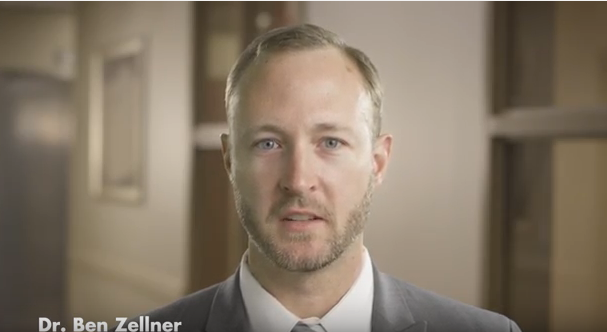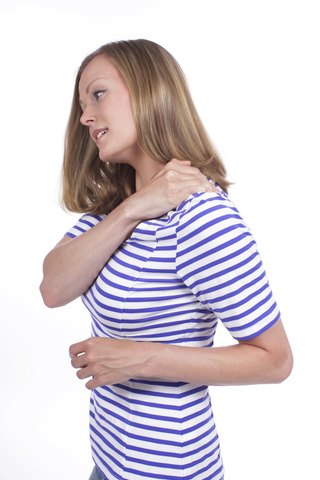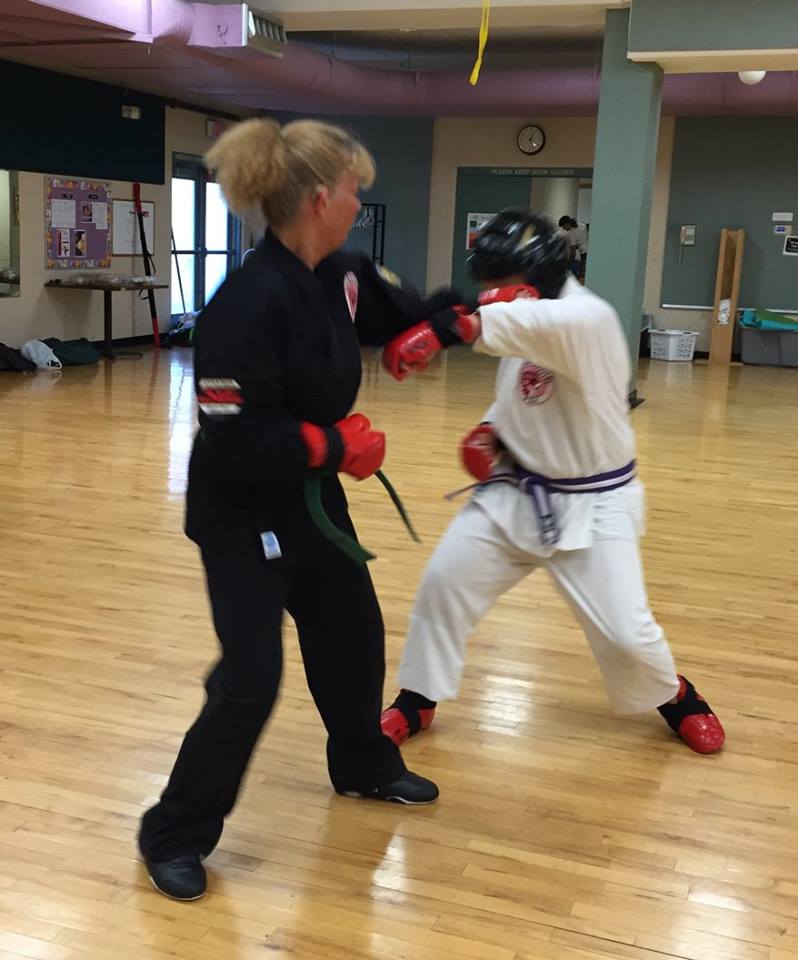Shoulder and Arm Injuries & Conditions
Shoulder and arm injuries can be as straightforward as a tendon tear or mysterious as frozen shoulder. Regardless of the type of injury, treatment options are available that can help relieve pain and restore mobility.
A shoulder injury doesn’t automatically mean you’ll need surgery. Many non-surgical treatment options are available to treat shoulder injuries such as AC separation and rotator cuff injuries. Keep reading and learn more about treatment options available for your shoulder or arm injury.
A shoulder separation involves the acromioclavicular joint (also called the AC joint) where the collarbone (clavicle) meets the highest point of the shoulder blade (acromion). It is most often caused from a fall directly onto the shoulder that injures the ligaments that surrounding the AC joint.
Symptoms
A mild shoulder separation involves a sprain while more serious injury tears the AC ligament and sprains or slightly tears the coracoclavicular (CC) ligament, moving the collarbone resulting in a visible bump.
In more severe cases, the both the AC and CC ligaments are completely torn the AC joint is noticeable out of position with a larger bump.
While shoulder separation is painful, most people return to normal activities after this injury, even if a noticeable bump remains permanently.
Treatments
Your doctor may recommend nonsurgical treatments, such as a sling, cold packs, and medications to help manage the pain. Some people have continued pain in the area of the AC joint due to abnormal contact between the bone ends, development of arthritis or other injury.
Most patients won’t need surgery, unless pain persists or the deformity is severe. Your surgeon will talk to you about options and help you choose the best one for your specific injury. Operations typically have good outcomes.
Regardless of treatment, your doctor will likely recommend rehabilitation to restore and rebuild motion, strength, and flexibility.
Frozen shoulder, also called adhesive capsulitis, is a painful condition that can make it difficult, if not impossible to move your shoulder. It occurs when the shoulder capsule thickens and becomes stiff and tight and develops thick bands of tissue called adhesions.
Physical therapy that focuses on shoulder flexibility is the primary treatment for frozen shoulder. After a period of worsening symptoms, frozen shoulder tends to get better, although full recovery may take up to three years.
This condition mostly affects people between ages 40 and 60 and is more commonly seen in women. The cause is unknown, but people with diabetes, hyperthyroidism, Parkinson’s disease and cardiac disease are at higher risk.
Symptoms
Pain from frozen shoulder is usually dull or aching. It is typically worse early in the course of the disease and when you move your arm. The pain is usually located over the outer shoulder area and sometimes the upper arm. Frozen shoulder develops in three stages: Freezing, Frozen, and Thawing.
Stage 1: Freezing – As pain becomes worse, it becomes more difficult to move your shoulder. Duration is six to nine months.
Stage 2: Frozen – Symptoms may begin to improve, but the stiffness remains. Duration is four to six months.
Stage 3: Thawing – Symptoms slowly improve and return to normal or close to normal. Duration is six months to two years.
Treatments
Frozen shoulder may take up to three years to fully resolve. Your doctor will prescribe medications to help you control pain and regain movement. Non-steroidal anti-inflammatory medicines, such as aspirin and ibuprofen can help reduce pain and swelling. Your doctor may recommend steroid injections for inflammation.
Another treatment, hydrodilatation, involves an injection of a large volume of sterile fluid into the shoulder joint to expand and stretch the shoulder joint.
Your doctor will also provide you with recommendations for physical therapy to help restore motion. Therapy commonly includes stretching or range of motion exercises for the shoulder.
If medication and physical therapy don’t help, your doctor may discuss arthroscopic surgery with you. Outcomes for frozen shoulder surgery are generally good.
Rotator cuff tears may be caused by injury or degeneration, where the tendon gradually wears down from use over time. Repetitive shoulder movements, lack of blood supply and bone spurs can also factor in rotator cuff tears. People over 40 are at greater risk for this type of injury as are athletes who put a strain on their shoulder.
Symptoms
The most common symptoms of a rotator cuff tear include:
- Pain during activity or rest
- Pain when lifting and lowering your arm
- Weakness when lifting or rotating your arm
- Crackling sensation during shoulder movement
For sudden tears, you may feel sharp pain and possibly a snapping sensation and weakness in your upper arm.
Treatments
Left untreated, rotator cuff tears can worsen over time. Your doctor will make recommendations to help reduce pain and restore range of motion. He or she will take your age, activity level, general health, and the type of tear you have into consideration when planning your treatment.
In the majority of patients, nonsurgical treatment relieves pain and improves shoulder function. Your doctor will likely recommend rest, avoiding activities that cause shoulder pain and physical therapy.
If rest, medications and physical therapy do not provide relief, your doctor may inject a local anesthetic and cortisone preparation. He or she also may recommend surgery if your pain does not improve. Surgery to repair a torn rotator cuff most often involves re-attaching the tendon to the upper arm bone. Your doctor will help you determine the best treatment for your injury.
Surgical Procedures
Shoulder Arthroscopy, Rotator Cuff Repair
A shoulder arthroscopy or “shoulder scope” is a surgical procedure in which the orthopedic surgeon uses a camera to visualize the internal structure of the shoulder joint. Through this minimally invasive scope, the surgeon can address cartilage, labral, or rotator cuff tendon damage. A rotator cuff repair is a procedure in which one or more of the rotator cuff muscle tendons are partially or completely torn and the surgeon works to reattach those tendons.
A shoulder joint tear, or glenoid labrum tear, is caused by injuries to the tissue rim surrounding the shoulder socket due to traumatic injury or repetitive shoulder motion.
Symptoms
The symptoms of a tear in the shoulder socket rim are similar to those of other shoulder injuries and include:
- Instability in the shoulder
- Shoulder dislocation
- Pain
- Catching, locking, popping or grinding
- Night pain or pain with daily activities
- Decreased range of motion
- Loss of strength
Treatments
Your doctor will make recommendations to help reduce pain and restore range of motion. He or she will consider your age, activity level, general health when planning your treatment.
In the majority of patients, nonsurgical treatment relieves pain and improves shoulder function. Your doctor will likely recommend rest and avoiding activities that cause shoulder pain and physical therapy.
If rest, medications, and physical therapy do not help, your doctor may inject a local anesthetic and cortisone preparation. He or she also may recommend arthroscopic surgery if your pain does not improve. Talk to your doctor about the best treatment for your injury.
Shoulder trauma is not uncommon. There are many types of shoulder injuries ranging from fractures (broken bones) to dislocations to torn ligaments, tendons and muscles.
Common causes of shoulder injuries include fractures from a direct blow to the area due to a fall, collision, or motor vehicle accident or dislocation due to forceful twisting, strong impact or heavy lifting.
Symptoms
Your symptoms will depend upon your injury, but the common symptoms include:
- Pain, swelling and bruising
- Inability to move the shoulder
- A grinding sensation when the shoulder is moved
- Abnormal appearance
Treatments
Your treatment will depend on the type of your injury. For most fractures, surgery is not necessary unless it is a compound fracture that has broken through the skin or the bone is severely out of place. Surgery typically involves fixing the fracture with plates and screws or rods inside the bone.
A shoulder fracture, separation or dislocation can have a significant impact on daily activities for several weeks or even months. Most shoulder injuries, whether treated surgically or nonsurgically, require a period of immobilization followed by rehabilitation.
Forearm bones can break in different ways. For example, the bone can crack just slightly, or break into a few or many pieces. The broken pieces of bone may line up straight or may be far out of place. If the bone breaks in such a way that bone fragments stick out through the skin or a exposes the broken bone,seek immediate medical attention because of the risk for infection. The most common causes of forearm fractures include a direct blow, a fall, or automobile accident.
Symptoms
A broken forearm causes significant pain. Since you have two bones in your forearm, and usually both bones are involved, forearm fractures often cause an obvious deformity and you will most likely need to support your injured arm with your other hand.
Other common symptoms include:
- Swelling
- Bruising
- Limited movement
Treatments
Treatment involves putting the broken pieces back into position and keeping them from moving out of place until they are healed. If the bones are not accurately aligned during healing, it may result in future problems with your wrist and elbow.
If only one bone is broken and it is not out of place, it may be possible to avoid surgery and treat it with a cast or brace. When both forearm bones are broken, or if the bones are visible because of an open wound, then surgery is required.
The most common type of surgical repair for forearm fractures involves repositioning the bone fragments into their normal alignment and holding them together with special screws and metal plates attached to the outer surface of the bone.
Depending on the severity of your injury, forearm bones typically take three to six months to fully heal. Your doctor will prescribe medications for short-term pain relief after surgery or an injury, such as opioids, non-steroidal anti-inflammatory drugs (NSAIDs), and local anesthetics. Your doctor may use a combination of these medications to relieve pain and reduce the need for opioids.
Surgical Procedures
Fracture Care
When a bone is broken is it called a fracture. Orthopedic surgeons can work to realign the broken bones and secure the bones in place. The goal is to restore proper alignment and stabilize the bone ends to allow healing. This can be accomplished through a variety of surgical techniques including open and minimally invasive methods such as plate and screws, “nailing,” or “pinning”.
The collarbone, or clavicle, is one of the main bones in the shoulder. Clavicle fractures are common and occur when a fall onto the shoulder or arm puts enough pressure on the bone that breaks. The bone may be slightly cracked or broken into many pieces.
Collarbone fractures are most often caused by a direct blow to the shoulder during a fall or a car collision. In babies, a clavicle fracture can occur during the passage through the birth canal.
Symptoms
Clavicle fractures can be very painful and may make it hard to move your arm. Other symptoms of a fracture may include:
- Sagging of the shoulder
- Inability to lift the arm
- A grinding sensation when you try to raise the arm
- An abnormal bump over the break
- Bruising, swelling, and/or tenderness
Treatments
Most broken collarbones can heal without surgery. Nonsurgical treatment may include arm support using an arm sling, pain medication and physical therapy.
After a clavicle fracture, it is common to lose some shoulder and arm strength. Your doctor will recommend strengthening exercises to help prevent stiffness and weakness. You should avoid strenuous exercise until the fracture is completely healed, and only resume gradually then.
If the break is more significant and the bone pieces don’t line up, you may need surgery, which typically involves putting the broken pieces of bone back into position and preventing them from moving out of place until they are healed. After surgery, over-the-counter pain relievers and ice may be sufficient to control pain. For more severe pain, your doctor may suggest a prescription-strength medication for a few days.
Surgical Procedures
Fracture Care
When a bone is broken is it called a fracture. Orthopedic surgeons can work to realign the broken bones and secure the bones in place. The goal is to restore proper alignment and stabilize the bone ends to allow healing. This can be accomplished through a variety of surgical techniques including open and minimally invasive methods such as plate and screws, “nailing,” or “pinning”.
Related Posts
3 Surgeries that can be Performed in the OSMS Procedure Room
2024-04-23T14:04:20-05:00By OSMS|Categories: Hand, Wrist, & Fingers, Orthopedics, Shoulder & Arm|Tags: Carpal Tunnel, Dr. Ben Zellner, Educational Video, Hand Care, Procedure Room|
Hospital or outpatient surgery center. These are probably the two most common types of locations a person would think of to answer the question, "Where [...]
Don’t Shrug Off Shoulder Pain
2024-04-23T13:42:35-05:00By OSMS|Categories: Orthopedics, Shoulder & Arm|Tags: Dr. Hein, Shoulder, Shoulder Pain|
The shoulder is one of the most complex joints in your body. Its motion allows you to change a light bulb, reach for plates in [...]
Mary’s I’m Back Story
2024-03-19T10:27:41-05:00By OSMS|Categories: I'M BACK, Joint Replacement, Orthopedics, Shoulder & Arm|Tags: Dr. Zellner, I'm Back, Joint Replacement, Shoulder, Shoulder Pain, Shoulder Replacement|
When pain is changing your life, it can be frustrating. It can also be discouraging when there doesn’t seem to be a remedy. After feeling [...]
Two injury-prone areas bow hunters should scout for
2024-04-23T11:59:29-05:00By OSMS|Categories: Hand, Wrist, & Fingers, Orthopedics, Shoulder & Arm|Tags: bow hunting, deer hunting, hand & wrist, rotator cuff, Shoulder|
By Dr. Ben Zellner, hand-to-shoulder specialist, and OSMS physician owner Dr. Ben Zellner is a board-certified, fellowship-trained orthopedic hand-to-shoulder specialist. He is seeing patients at [...]
LIVE Q&A: Common Shoulder Pain & Treatment Options with Dr. Jason Klein
2024-02-14T10:54:45-06:00By osms|Categories: Q&A LIVE, Shoulder & Arm|
Board-certified and sports medicine fellowship trained orthopedic surgeon Dr. Jason Klein presents a short seminar on common sources of shoulder pain and treatment options, then [...]
Ryan’s I’m Back Story
2024-03-19T10:55:34-05:00By osms|Categories: I'M BACK, Orthopedics, Shoulder & Arm, Sports Medicine|Tags: labrum tear, Sports Medicine|
With wide-eyed young basketball campers watching his every move and looking to him to learn the ins and outs of playing basketball, Ryan Borowicz simply [...]


ORTHOPEDIC MENU
OUR DOCTORS
- William Albiero MD
- William Enright MD
- Walker Flannery MD
- Luke Fraundorf MD
- Michael Harper MD
- Joel Hein MD
- Karl Henrikson MD
- Jason Klein MD
- Daniel Linehan MD
- Joseph McCormick MD
- Douglas Miller DO
- Darren Nabor MD
- Michael Parman MD
- Gordon Roedel MD
- Bryan Royce MD
- Steven Schechinger MD
- Jacob Seiler MD
- Thomas Sullivan MD
- Michael Tressler MD
- Ben Zellner MD
- Ryan Ziegler DO










